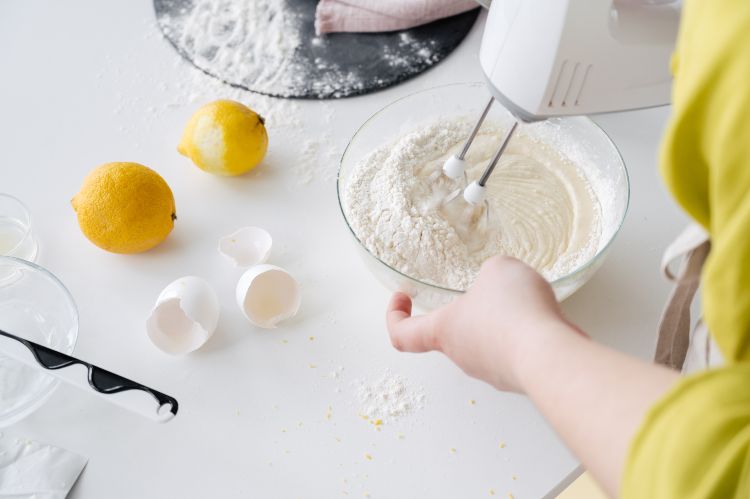The Food of Spitalfields
The origins, beauty and symmetry of Spitalfield’s patrician Georgian architecture and streets can, most probably, be accounted for in the violent consequences of one act in history: the revocation of the Edict of Nantes by King Louis IX of France in 1968. For in making it illegal for Protestants to worship their faith, this singular act caused the migration of around 50 000 Protestant Huguenots out of France and, mainly, into Great Britain. King Charles II offered them sanctuary, and between the years of 1670-1710 many came to settle in the East End of London, as well as in the Netherlands and South Africa.
The Huguenots were extremely hard working silk weavers, glass blowers and craftsmen and very soon they became integrated in the local East End community. If you wander up and down Spitalfield’s streets like Fournier, Wilkes, Princelet, Elder and Folgate, you will see just how well preserved their houses are, largely because of the work of the Spitalfields Trust, but also because, I believe, there is a collective consciousness that respects and wants to preserve this tiny corner of prosperous, thrifty and upstanding Huguenot Britain. After all, many British people descended from this industrious tribe, and to this day there are many families in Great Britain that carry, maybe even unknowingly, their names.
There is a wonderful Blog, written by The Gentle Author at www.spitalfieldslife.com, and I often go there, as one would a hushed library, when I want to read his thoughtful research, garnered over years of walking round the area and talking to its residents, documented in short essays. You can glean many really reliable eating recommendations in and around the area from this website.
During a brief period when I worked in London, I lived in a little cottage in Fournier Street. Arguably one of the most beautiful parts of the City, the very atmosphere of Spitalfields evokes a gritty and industrially urban historical narrative that sits, almost uncomfortably, next to the modern, glossy glass structures that surround it, paeans to the 21stcentury’s behemoth capitalist gods. One of the poorest and most deprived areas of London, Tower Hamlets is its council, Spitalfields now commands some of the highest property prices in London.
But what of its markets, what of its food, I hear you cry? Well, many of the butchers, the bakers and the greengrocers have long since moved on, and instead in have moved the Barbour, Agnes B, Fred Perry and Jigsaw shops, as well as an array of tacky stalls selling fake designer goods. There is also the dry cleaner that looks as if it is Jeeves of Belgravia, the hairdresser that cuts hair for £100, the minimalist apparel store, located in a huge warehouse that sells stripy vests for £150 and the stationery shop that sells embossed parchment monogrammed cards with vellum lined envelopes, a mere snip at £25 for five. Still, I am sure that the fine silks, embroidered cloth and rolls of fabrics sold by the Huguenots would be bought at at vast sums by the aristocracy and the increasingly wealthy merchant class of that era.
Spitalfields is still peddling the wares and services that underpinned the economic engine of Huguenot life: trade, barter, commerce and commodities are still the oxygen of its everyday life. It also still has a thriving foodie heart. We may not think that Leon, as a modern day fast food outlet, is giving us the gastronomic experience of our lifetime, but it serves seasonal, fresh, good ingredients cooked simply and well for a very reasonable price. Huguenot weavers would have approved: they would have wanted workers to waste minimum time during the middle of the day: grab tea, grab food and back to the looms! Vite! Allez! Il y a trop de travail pour avoir un long repas.
Along the sides of the Spitalfields market you can see street food vendors’ stalls, manned by blue plastic gloved immigrants making and selling cardboard boxes filled with steaming oriental dim sum, hot tandoori chicken in plastic bowls, coconut Caribbean soup and spicy Indonesian kebab skewers. On the corner of Fournier Street and Brick Lane the Bangla City Supermarket is doing a roaring trade, under the shadow of the towering mosque spire. You can hear the cry of the imam, “Allah! Allah!” as the smell of toasting chapatis, spices and fritters fills the hot, dry air.
The shiny eateries within the new market hall pronounce the language of the modern ethical eater in bold letters on banners and menus: “Meat from farms we trust”, “Line caught fish of the day”, “Free range eggs from organically reared chickens”, “Bread freshly baked in our own ovens”.
I am sitting drinking coffee in Verde in Brushfield Street, and I am talking to Harvey Cabaniss, an American of Huguenot heritage. He is Jeanette Winterson’s tenant, running a tiny deli, shop and sandwich café where, quite possibly, over 300 years ago some of his ancestors may well have stopped to eat a bite. He tells me how his Thai cooks prepare each individual sandwich filling, and sometimes they make a curry. Behind me are scores of jars of Seville orange marmalade made by a friend, piled vertiginously up to the ceiling, a thrifty preserve phalanx. He sells Pierre Marcolini Belgian chocolates, and assures me they are the very best, but he must rush as he has asparagus to collect for the making of the lunchtime soup. He is off on his bicycle, while his staff are hard at work chopping, slicing, serving. We are all immigrants in the room, in an immigrant enclave of a port town that has seen every nationality and race known on earth. In here it all feels very homely and reassuring. Jars of Passata from Italy line the dark, wooden shelves, alongside fruit cordials from Sweden and sweets from France. This is a little international foodie trading haven. A Huguenot weaver would have sat down next to the (then) roaring fire and drink his hot beverage of choice whilst looking at the hands that turn on the grandfather clock.
Through part opened windows and residents going to work, opening their front doors and stepping out onto the street, I spy designer Shaker kitchens, Farrow and Ball paint, Nina Campbell curtain fabrics and smart pin striped suited money traders with leather brogues, stiff cotton shirts and designer glassware. They look hurried, standing in Poppie’s the shiny 1950’s retro American fish and chip bar, grabbing brunch to go into their gleaming domed ziggurats to make the money that fuels their to-go lifestyle.
In narrow Artillery Row, next to teeth whitening surgeries and bespoke tailors with names like Norton and Townsend and Alexander Boyd, sit the steaming, bustling Habibi Sushi bar and the crepuscular Grapeshots drinking den. The windows of the Precious upper class ladies’ frock shop looks out onto Mr. City’s coronation chicken, hummus and tahini or tomato and chilli salad sandwich filling bar. The food of the poor is now the food of the poor that go on package holidays, watch TV travel programmes and chat to foreign foodies on Twitter, swapping recipes on food blogs.
I sit in Canteen, a huge clean, sparse, modern diner, with an open plan kitchen and banquette seating looking out on the stall traders that sell Cath Kidston imitation handbags and third world, sweatshop produced garments that Huguenot silk weavers would have condemned as chimney cleaning rags. I am drinking hot tea and eating “Freshly baked in our own ovens” toast with “Homemade from our country orchard” jam. Clean shaven, white shirted men tap fervently into lap tops, the man behind the kitchen counter shouting “Two bacon bagels!”, made with, I am sure, “organic and free range pigs”.
Spitalfields may have changed through a score of lifetimes, transformations and economic revolutions but intrinsically its heart beats to the same rhythm. I left it when heavily pregnant with my daughter, now a teenager, turning my back on city life, in favour of that orchard, those chickens, that farm, the same ingredient rural idyll the restaurants here are trying to peddle at inflated prices. After a fifteen year absence I hardly recognise this new world, the renovations, the refurbishments, the additions and the expansions. I knew it as a dirty, scruffy, quite dangerous area, where you wore flat shoes, walked fast, kept your eyes straight ahead and did not catch passers’ glances. But the sense of Huguenot industry, haste, commercial thrust and alluring packaging is still tangible and thriving. The food may seem different, mais plus ca change, plus c’est la meme chose.
Verde: www.verde-and-company



